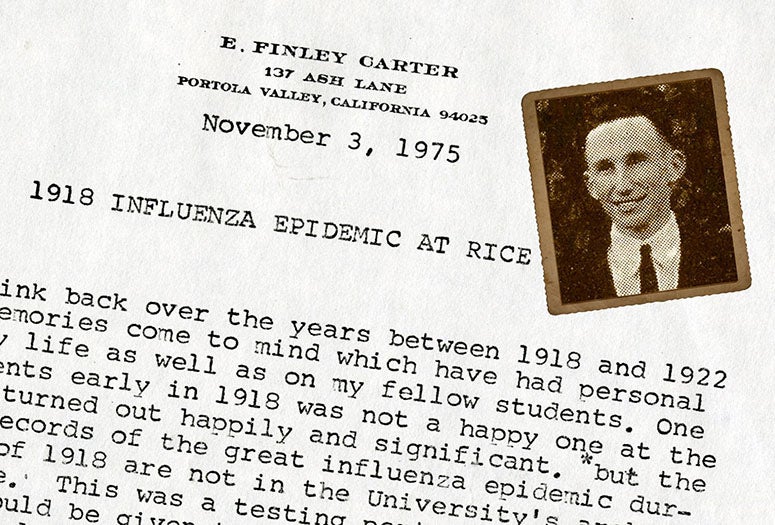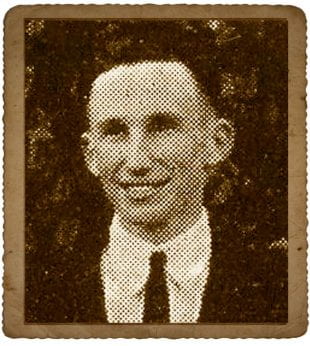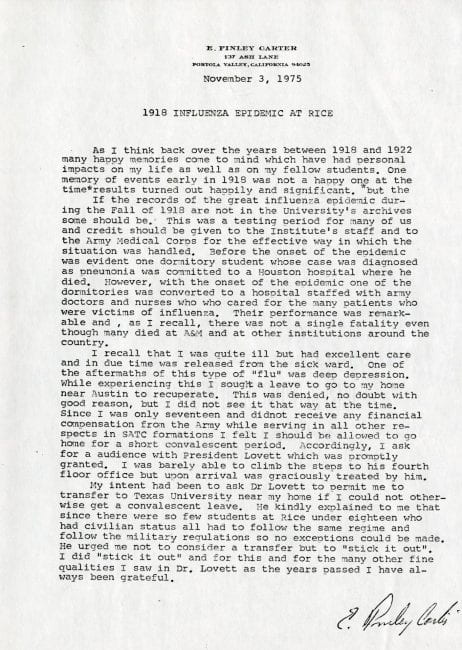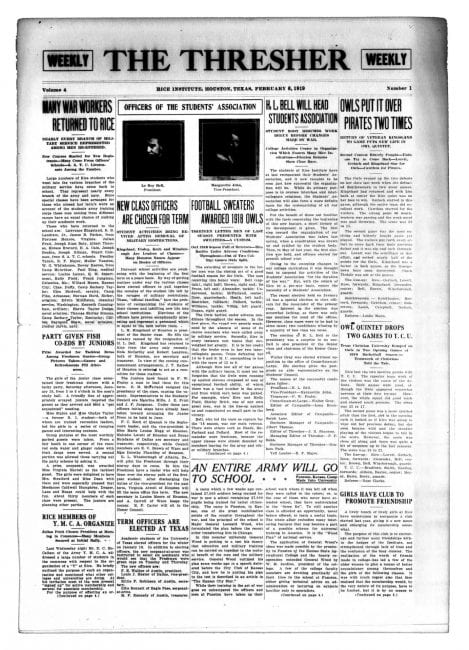From hurricanes to recessions to sending its students off to war, Rice has faced and overcome its share of trying times. COVID-19 seems to pose the university with an entirely different challenge.
“It's almost like it's an invisible enemy that could strike anywhere, anytime, anyplace,” said John Boles ’65, Rice’s William P. Hobby Professor of History. “And there's almost no way to escape it.”
And yet, COVID-19 isn’t the first pandemic to have sweeping effects on Rice. That distinction goes to the Spanish flu that swept the world more than a century ago.
The influenza pandemic of that era coincided with World War I, notes Boles, the author of “University Builder: Edgar Odell Lovett and the Founding of the Rice Institute.” His history of the university covers Lovett’s actions as president during the tumultuous years that included the first world war and the Spanish flu outbreak.
Rice, then just in its infancy, had to adapt quickly. It militarized. Classes changed scope, focusing on training and preparing graduates for a world at war, Boles said.
“In case they had to go to war, they actually made it possible for students to graduate a couple of months early so they could enlist,” Boles said.
Oddly, although there are ample documents in the Rice archives describing the effects of World War I, there are almost no records about the Spanish flu, said Centennial Historian Melissa Kean.
No one’s really sure why, Kean said. But what we do know about Rice and the Spanish flu comes from a letter written half a century later by a Rice student who survived the disease.
In 1975, at the age of 74, alumnus E. Finley Carter penned an account of his experiences as an undergraduate at the Rice Institute more than 50 years earlier.
“As I think back over the years between 1918 and 1922 many happy memories come to mind which have had personal impacts on my life as well as on my fellow students,” he wrote. “One memory of events early in 1918 was not a happy one at the time but results turned out happily and significant.”
The fall semester of 1918 was an unusual one. World War I raged on the other side of the globe, a strong military presence had emerged on campus and a deadly sickness was sweeping the nation. Rice, though far away from the savagery of frontline combat, was feeling the effects.
“This was a testing period for many of us and credit should be given to the institute's staff and to the Army Medical Corps for the effective way in which the situation was handled,” Carter wrote.
In his account, Carter recalls how one of the residential colleges was converted to a hospital staffed by doctors and nurses from the Army, where he found himself a patient suffering from the Spanish flu.
Carter goes on to recount the “deep depression” he struggled with during his convalescent period after he was released from the makeshift sick ward. He was 17 years old and his lungs were so ravaged by the illness he struggled to climb the four flights of stairs to Lovett’s office. He had been denied leave to return home for recuperation and appealed the decision directly.
“He urged me not to consider a transfer but to ‘stick it out,’” Carter wrote. “I did ‘stick it out’ and for this and for the many other fine qualities I saw in Dr. Lovett as the years passed I have always been grateful.”
Headlines in the Feb. 6, 1919, issue of the Rice Thresher boasted of “war workers” returning to Rice, not only students but also faculty who had left to serve in the war. The shape of the university had changed, but it had survived.
“It has become evident that we are living at a wholly different, bigger, broader and better school,” an article read. “You come back enriched by experiences, and fired by ambitions, in many cases not attained.”
Those words sound familiar today.
Rice President David Leebron penned an emotional letter to the Rice community March 17 addressing the unusual circumstances facing the university amid the COVID-19 pandemic.
“What I have observed over the past weeks is a community committed to doing the right thing for all of our members,” Leebron wrote. “A community engaged in education and research that can overcome the obstacles. A community that cares deeply not merely about its own campus, but about our city, our nation and our world. We will do all we can to make a positive difference as we address this crisis and, when it is over, we will do much more.”




